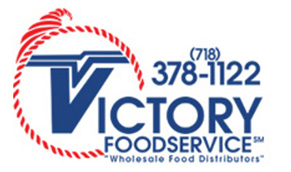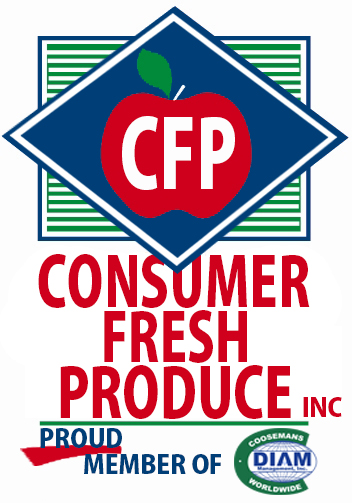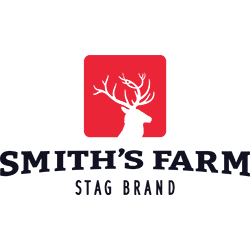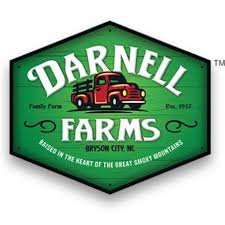New York state is home to diverse agricultural regions and climates, from the Finger Lakes to the Hudson Valley to upstate New York, each with its own microclimate and crops grown.
According to 2022 data from the USDA National Agricultural Statistics Service, fruit, berries and tree nuts contributed about $721 million and vegetables, melons and potatoes contributed $500 million to the state's economy.
And for growers and marketers, it's no wonder that New York earned the nickname, The Empire State.
Why New York?
“New York state is a prime place to grow produce because of the excellent and diverse soils, a climate that is regulated by the Great Lakes, vast flat plain-like farmland in the western part of the state, access to fresh water and proximity to market,” says Shannon Kyle, sales and marketing manager at Elba, N.Y.-based Torrey Farms Inc. “We can reach over 70% of this country's population in six to eight hours by truck.”
Kyle says her family farm, which grows cabbage, cucumbers, onions, potatoes, pumpkins, winter and summer squash, and green beans, distributes its produce along the Eastern Seaboard and into Ohio and the St. Louis, Mo., area thanks to its location between Rochester and Buffalo.
“As weather plays a factor in other parts of the country, that can often create movement into other market areas as well,” she says. “We work with various retailers, wholesalers, food service distributors, and processors for all of our items.”
Cynthia Haskins, president and CEO of the New York Apple Association, says Mother Nature also helps create magic for the country's No. 2 apple producer.
“The warm summer days and cool fall nights make New York state a perfect place to grow apples,” she says. “New York state has an ample water supply, stemming from the lakes, ponds and irrigation. New York is popular for growing apples with superior flavor and grows a little more than 30 apple varieties in promotional volumes.”
Haskins also says New York's proximity to a large swath of the country helps its more than 500 family-owned orchards reach more retail partners across the Northeast and mid-Atlantic.

“Helping our retail partners source closer to where food is grown lowers freight costs and time and reduces their carbon footprint,” she says. “New York apple growers are relatively close to many major cities in the U.S. and can deliver apples within 24 to 48 hours to these large markets; that's a big sustainability selling point for Northeastern and mid-Atlantic markets.”
Marc Goldman, director of produce and floral for Bronx, N.Y.-based Morton Williams Supermarket, says he tries to highlight as much locally grown produce as he can, adding that locally grown can mean different things to different shoppers. And being in New York City, he's always challenged with highlighting New York produce in a small footprint.
But, during apple season, Goldman says Lil' Chief 2-pound bags with small, kid-friendly apples do well. The bags, he says, feature New York apple orchards on the back of the bag.
“The whole concept of it promotes New York state on the back of the bag,” he says. “It shows the farms, and I think it's a really good way to sell the New York state apples.”
Season Outlook
Kyle says she's “hesitantly optimistic” about the current growing season.
“At this point in the season, we expect to have some high-quality crops coming in as we get closer to harvest, but the market conditions all winter have me a little cautious about where pricing and movement will shake out,” she says. “As we all know in marketing it is all about supply and demand, and every year we experience peaks and valleys of supply depending on what is happening in our neighboring states who grow many of the same items as we do.”
Kyle says this competition from crops grown in Canada and Mexico can make it tough for New York growers, as Mexico has year-round supplies and Canada grows the same crops her family does.
“There is a lot more anxiety around the unknown of what the market conditions on our items will be, as highly perishable items often fluctuate significantly from day to day,” she says. “As we shipped our storage crops (onions and potatoes) this winter, the market was very flat, and I just hope that does not carry into the summer deal.”
Growers have become more concerned about the increase in the cost of farming in the state, Kyle says, noting that H-2A labor costs growers in the state around $18.83 an hour, plus overtime.
“The days of just planting a crop or some extra acres because you had the extra seed are over,” she says. “There is simply too much investment put into every acre we put in the ground, so I would say we have had to exhibit a lot more self-control and better planning to try to have a balanced level of supply for the demand that we know we can traditionally expect, with the obvious exception of the wild card of what Mother Nature will do.”
As for this season, Kyle says production in western New York is early with crops like cabbage thanks to cool temperatures and good rainfall in May. Heat-friendly crops such as cucumbers, squash and beans are a little behind schedule this year.
“I think in the eastern and southern parts of the state, the conditions have been even more challenging than what we have experienced in the western area, where the majority of our farmland is between Buffalo and Rochester,” she says.
Kyle says Torrey Farms planned to start harvesting cabbage at the end of June, which is early. She says her family looks to harvest green beans, zucchini and yellow squash around July 10, cucumbers around July 18 and onions around July 15.
“The cool wet May that we had was prime cabbage weather,” Kyle says.
Haskins says that despite the rainfall in spring and then warmer temperatures, this year's apple crop looks good.
“Apple harvest will begin in mid-to-late August and continue through the first week of November,” she says.
Haskins says the New York Apple Association will partner with retailers for promotions this year, including display totes, polybags, pouches and bulk displays. She says geotargeting digital advertising as well as targeted social media to help promote New York-grown apples.
“Team NYAA is working closely with retailers in customizing the right mix of promotional offerings to drive sales and get New York apples front and center of consumers,” Haskins says.

















